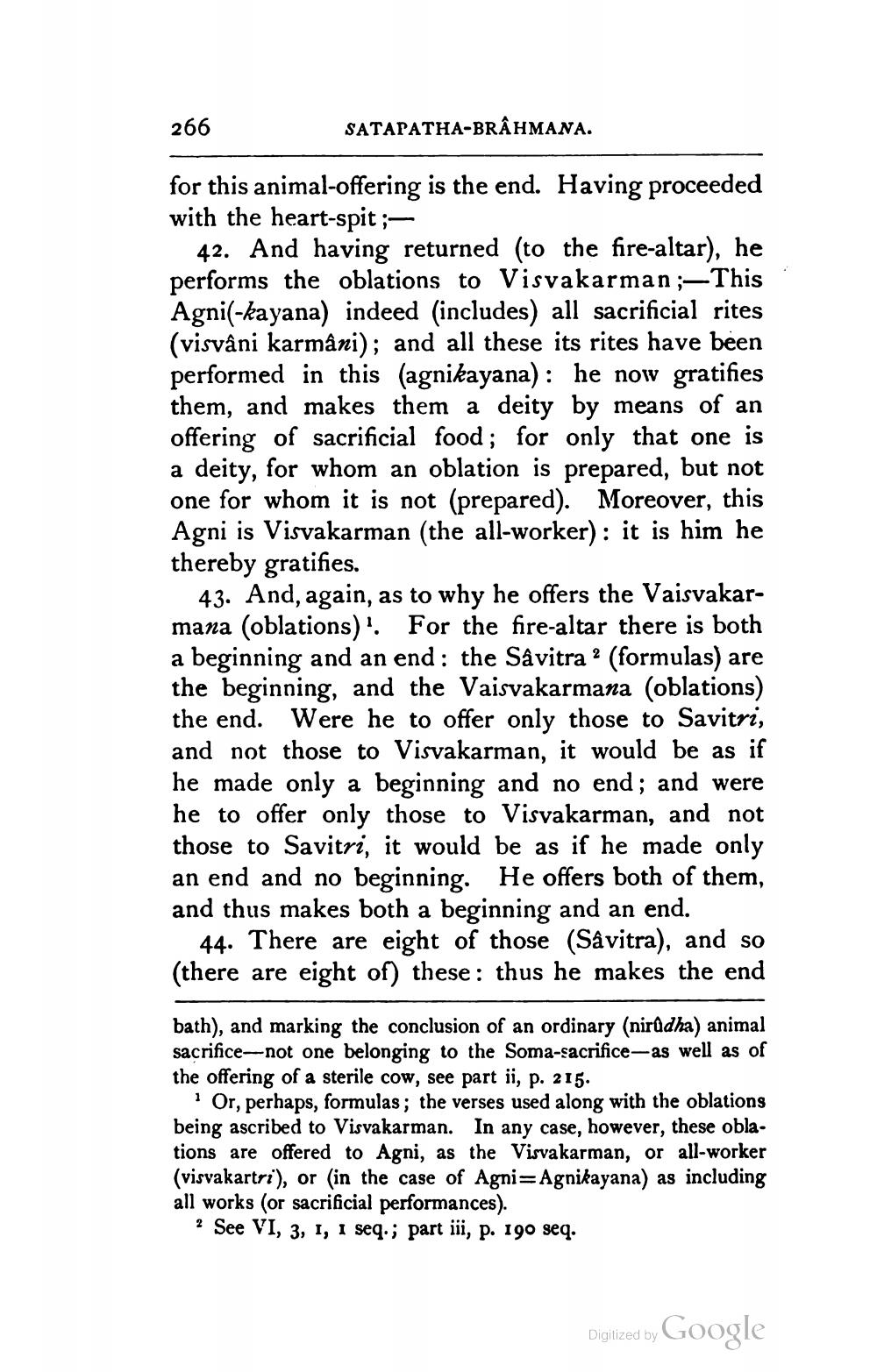________________
266
SATAPATHA-BRÂHMANA.
for this animal-offering is the end. Having proceeded with the heart-spit ;
42. And having returned (to the fire-altar), he performs the oblations to Visvakarman ;- This Agni(-kayana) indeed (includes) all sacrificial rites (visvâni karmâni); and all these its rites have been performed in this (agnikayana): he now gratifies them, and makes them a deity by means of an offering of sacrificial food; for only that one is a deity, for whom an oblation is prepared, but not one for whom it is not (prepared). Moreover, this Agni is Visvakarman (the all-worker): it is him he thereby gratifies.
43. And, again, as to why he offers the Vaisvakarmana (oblations)'. For the fire-altar there is both a beginning and an end: the Savitra ? (formulas) are the beginning, and the Vaisvakarmana (oblations) the end. Were he to offer only those to Savitri, and not those to Visvakarman, it would be as if he made only a beginning and no end; and were he to offer only those to Visvakarman, and not those to Savitri, it would be as if he made only an end and no beginning. He offers both of them, and thus makes both a beginning and an end.
44. There are eight of those (Såvitra), and so (there are eight of) these : thus he makes the end
bath), and marking the conclusion of an ordinary (nirůdha) animal sacrifice-not one belonging to the Soma-sacrifice-as well as of the offering of a sterile cow, see part ii, p. 215.
Or, perhaps, formulas; the verses used along with the oblations being ascribed to Visvakarman. In any case, however, these oblations are offered to Agni, as the Visvakarman, or all-worker (visvakartri), or in the case of Agni=Agnikayana) as including all works (or sacrificial performances).
? See VI, 3, 1, 1 seq.; part iii, p. 190 seq.
Digitized by Google




